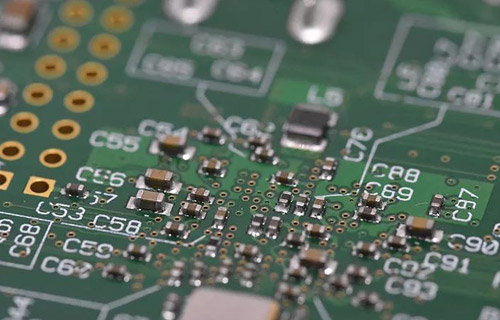In the FR4-PCB welding of electronic industry, gold has become one of the most commonly used surface coating metals due to its excellent stability and reliability. However, as an impurity in the solder, gold is very harmful to the ductility of the solder, because brittle Sn-Au (Sn-Au) intermetallic compounds (mainly AuSn4) will be formed in the solder. Although low concentration of AuSn4 can improve the mechanical properties of many South Korean tin-containing solders, when the content of gold in the solder exceeds 4%, the tensile strength and elongation at failure will decline rapidly. The 1.5um thick pure gold and alloy layer on the pad can be completely dissolved into the fusion solder during wave soldering, and the AuSn4 formed is not enough to damage the mechanical properties of the plate. However, for the surface assembly process, the acceptable thickness of the gold coating is very low and requires accurate calculation. Glazer et al. reported that the reliability of the solder joint between the Cu-Ni-Au metal coating on the plastic quadrilateral flat package (PQFP) and FR-4 PCB will not be damaged when the gold concentration does not exceed 3.0 W/O.

Too much IMC endangers the mechanical strength of the solder joint due to its brittleness, and affects the formation of the bell hole in the solder joint. For example, the solder joint formed on the 1.63um gold layer of the Cu-Ni-Au pad can be reflow welded after printing 7mil (175um) 91% metal content Sn63Pb37 solder paste on the pad. Sn-Au metal compounds become particles and are widely dispersed in solder joints.
In PCB board processing, in addition to selecting appropriate solder alloy and controlling the thickness of gold layer, changing the composition of base metal containing gold can also reduce the formation of intermetallic compounds. For example, if Sn60Pb40 solder is welded onto Au85Ni15, there will be no gold brittleness.
Cold welding refers to solder joints with incomplete reflow after SMT processing and welding, such as granular solder joints and irregular shaped solder joints, or incomplete fusion of solder powder. As the name implies, cold soldering refers to soldering when reflow is insufficient. For example, the peak temperature of the reflow curve is not high enough, or the time above the liquidus in the reflow curve is short. For eutectic Sn/Pb solder, the recommended peak temperature is about 215 ℃, and the recommended residence time beyond the liquidus temperature is 60~90s.
However, other factors may also affect the occurrence of cold welding, such as:
1) Heating with insufficient reflux time.
2) It is disturbed during the cooling stage, which is the surface unsmooth solder joint caused by the disturbance during the cooling stage.
3) Because of surface pollution, the activity of flux is inhibited. In the cooling stage, if the solder joint is disturbed, the surface of the solder joint will show uneven shape, especially when the temperature is slightly lower than the melting point, the solder is very soft. This kind of defect is either caused by strong cooling air or uneven movement of conveyor belt.
Causes and solutions of cold welding problems during reflow welding
The surface contamination on and around the solder pad pins will inhibit the flux activity and lead to incomplete reflow. In some cases, unmelted solder powder can be observed on the surface of the solder joint. A typical example of pollution is the residue of electroplating chemicals used for some pads and corner metals. This situation should be solved by appropriate post-electroplating cleaning process. Insufficient flux activity will lead to incomplete understanding of metal oxides, and then lead to incomplete fusion of solder metals. Similar to surface pollution, tin balls often appear around the solder joint, and poor quality of solder powder can also cause cold welding problems in FR-4 PCB.